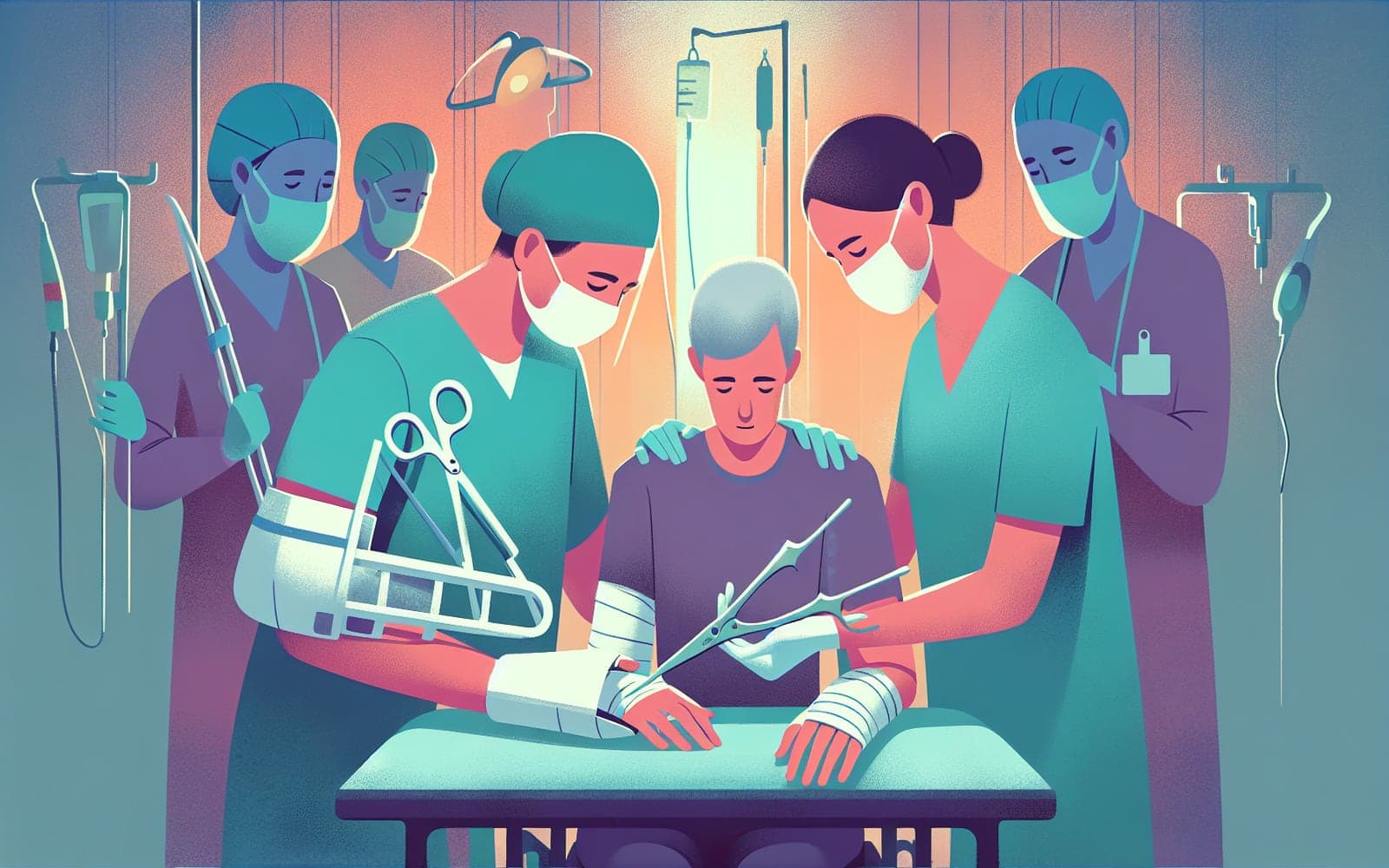Treating Triquetrum Fractures: From Splints to Surgery
Published: Jul 22, 2024

Medically reviewed by Benjamin Seth Martinez | MD, Statpearls - Director of Clinical Content on July 22nd, 2024.
Treating a triquetrum fracture requires a tailored approach based on the fracture type and severity. While most cases heal well with conservative treatment, some may require surgical intervention.
Contents
Initial Management: Rest, Ice, and Immobilization
The first step in treating a triquetrum fracture is to reduce pain and swelling. This typically involves resting the wrist, applying ice, and initial immobilization with a volar splint. The splint is usually applied with the wrist in slight extension, allowing for some compression while still permitting ice application and elevation of the limb.
Conservative Treatment: Casting and Immobilization
For most uncomplicated triquetrum fractures, conservative treatment is the go-to approach. This involves immobilization in a short arm cast for 3-6 weeks, depending on the fracture type. Avulsion fractures typically require 3-4 weeks, while body fractures may need up to 6 weeks. The cast is applied with the wrist in slight extension, leaving the metacarpophalangeal (MCP) joints free to prevent stiffness.

Surgical Intervention: When It's Necessary
Surgery is typically reserved for complicated cases. This includes open fractures, those with significant displacement (2mm or more), or fractures associated with other injuries like perilunate dislocations. The most common surgical approach involves open reduction and internal fixation (ORIF), where the bone fragments are realigned and held in place with screws or pins.
Frequently Asked Questions
Most fractures heal within 4-6 weeks, but full strength may take several months to return.
Not always, but fractures displaced by 2mm or more often benefit from surgical fixation.
Yes, and it's encouraged to prevent stiffness in your finger joints.
Complications are rare but can include nonunion, stiffness, and occasionally, chronic pain.
Key Takeaways
With proper treatment and rehabilitation, most people with triquetrum fractures can expect a full recovery and return to normal activities.
For personalized advice on treating your triquetrum fracture, don't hesitate to reach out to Doctronic for expert guidance.Related Articles
References
Urch EY, Lee SK. Clin Sports Med 2015; 34:51.
Suh N, et al. J Hand Surg Am 2014; 39:785.
This article has been reviewed for accuracy by one of the licensed medical doctors working for Doctronic. Always discuss health information with your healthcare provider.

